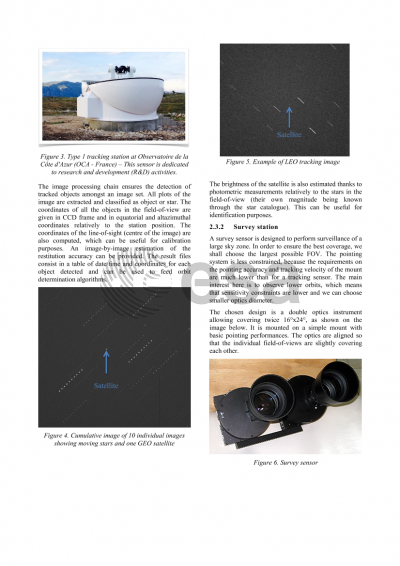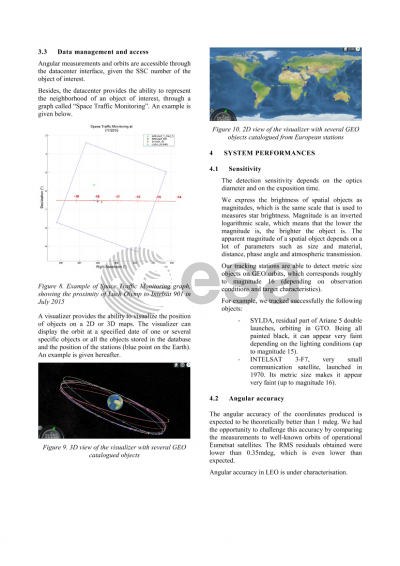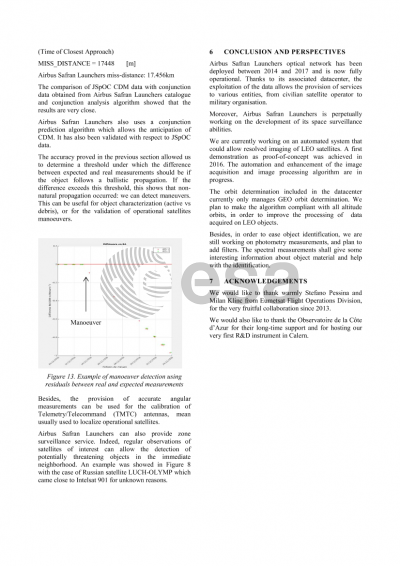Document details

Abstract
With the continuous growth of space applications, the number of objects in orbit is increasing dramatically. Space Situational Awareness has become a necessity to insure safe operation of space assets.
Since 2008 Airbus Safran Launchers (ASL) has been developing capabilities for Space Surveillance and Tracking,
From 2014 up to now, ASL has deployed a fully automated network of optical stations with worldwide coverage. It performs tracking of objects in GEO/MEO/LEO orbits and provides optical angular measurements allowing orbit determination and feeding Airbus Safran Launchers’ own catalogue of space objects.
This catalogue allows the provision of collision warning. Orbit refinement can then be performed on demand through the network.
With this Optical sensor network, Airbus Safran Launchers has the capability to provide data or services to government and private sector operational users of space assets.
This paper will describe the system architecture, station design, performances and capabilities in the context of space debris.
Preview








